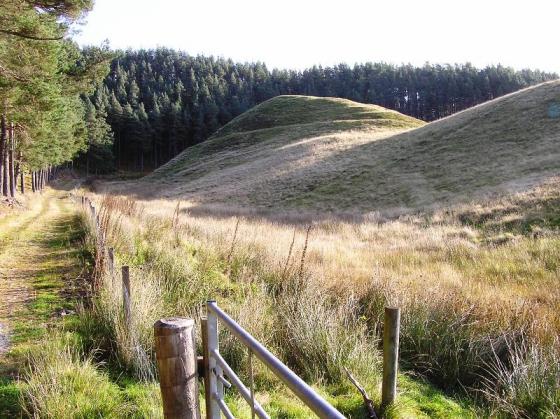Visiting an ancient site evokes emotions which I find very difficult to put into words. I suppose I could cite the stereotypical, dumb male reticence for emotion and pretend it’s just ‘something to do’... but at the end of the day you have to answer to the inner self, you know? So what is it which inspires me to seek out yet another obscure megalithic monument, when I could be doing what ‘normal’ men do, such as a ‘thrilling’ round of golf at the course across the way, perhaps? Is it an attempt to allay the uncertainty of purpose, of meaning, even – seemingly endemic within a society shorn of the mass anaesthesia of monotheistic religious belief – by returning to the places our ancestors gathered in an attempt to assuage the very same fundamental fears they clearly shared? A desire, perhaps, to achieve some sort of continuity of human experience through exposure to the same inspiring landscape and – just perhaps – learn from their mistakes? To feel I’m actually a part of some ongoing quest, one small piece of the human jigsaw spinning through an unimaginable void on a journey to Stephen-Hawkings-knows-where. In short, perhaps I feel the need to experience raw emotion, the ‘stuff’ that defines us as a species? Or is all this just pretentious delusion? The sort of discourse that ensures a woman’s eyes glaze over so you don’t get laid? ‘That’s a fascinating hobby.... oh, is that the time?‘
Or perhaps I could just take you to the centre of Upper Lagmore and say ‘this is why I do what I do’. To be here. Right now. Yeah, when all is said and done, the Neolithic and Bronze Age inhabitants of these islands left us with perhaps the most articulate, enigmatic statements of what it really means to live upon this Earth... in the form of their standing stones, mounds and cairns. Perhaps as a species we really do ‘say it best when we say nothing at all’? For me they achieved – hell, still achieve – the reconcilliation of this apparent contradiction by forming a ‘connection’ between the observer and the landscape itself... so that we appear to observe no more but, instead, are actually directly involved with the natural occurrences of this planet. No longer just some creatures plonked upon the surface by a ‘higher entity’, but an integral part of this evolving planet, making it up as we go along... with all the responsibilities that entails. Not children any more, but adults facing reality. Daunting, isn’t it?
If you’ve struggled through the above, thank you for obliging me. For, when all is said and done, Upper Langmore blew me away primarily because of its exquisite location, set upon a steep hillside overlooking the River Avon. OK, the aforementioned golf course, below to the east (with, incidentally, the shattered remnants of Lower Lagmore chambered cairn to its north), is out of context, but the horizon of distant, rounded mountain summits says all that is necessary. The monument is a clava-style passage grave surrounded by a stone circle, of which five stones remain upright... including a fine, lichen coated monolith upon the western arc. There’s also a much taller (c12ft) stone – sadly fallen, which I guess actually makes it ‘longer’ – to the south-east, near the entrance to a ruinous passageway (with displaced lintel – according to Burl). This passageway once gave access to the central chamber within the internal ring cairn, the circumference of the latter defined by heavy kerbing. Yeah, despite the broken remnants of what once were presumably circle stones littering the site, quite a lot of the original fabric of Upper Lagmore still remains intact.
A visit to what is left is arguably all the more necessary since it would appear that the landowner does not want anyone to see it. Actions speak louder than words, with two barbed-wire fences needing to be negotiated upon the steep, uphill approach from the east [although, having said that, the lower can (currently) be stepped over, the upper ‘rolled’ under without causing any damage to visitor or fence]. It would seem these boundaries are not in place to protect the monument, since – disgracefully – junk lies within the clava’s immediate environs. I’ve a feeling I’m being watched, both from the golf pavillion and farm to the west, but nevertheless the ‘sense of place’ here is too intense to contemplate withdrawal until lack of time calls a halt. Bring it on, since I’d like to have a word with anyone who, it would seem, denies the importance of this wondrous place to Scottish heritage! Ironically, as I eventually retire to the car, I hear the sound of a vehicle’s engine, the source of which remains out of sight upon the hill I’ve just vacated.
Looking back near the memorial, across the river to the east, I notice a landrover parked by the site. Hmm. Perhaps I wasn’t being paranoid after all? Obviously, in retrospect, I must recommend an official approach for access – it would be great to understand what the issues are from the landowner’s perspective. Whatever you choose, Upper Lagmore deserves to be seen. I just wish I had more time to check out the other ruined chambered cairns in the immediate vicinity.



















































